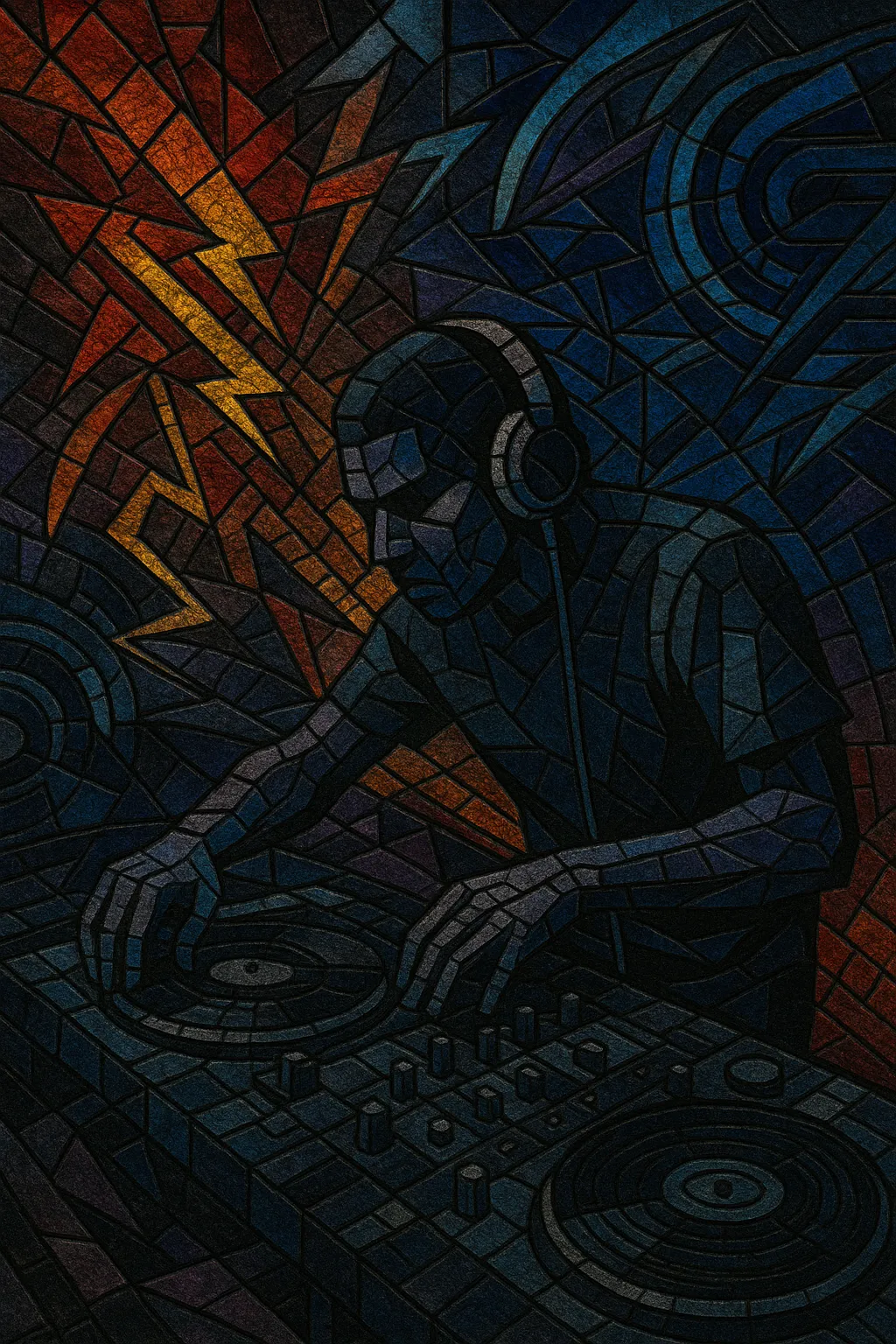Drum and bass (DnB) is a fast, rhythmically intricate form of electronic dance music centered on breakbeats at roughly 160–180 BPM and powerful, sub‑heavy basslines.
It grew out of the UK’s early ’90s rave and jungle scenes, combining chopped funk breaks (most famously the Amen break), dub and reggae sound‑system aesthetics, hip‑hop sampling, and techno’s futurist sound design.
Across its many substyles—liquid funk’s soulful harmonies, techstep and neurofunk’s cold, machine‑like bass engineering, jump‑up’s hooky bass riffs, atmospheric DnB’s pads and space—drum and bass remains a DJ‑oriented, dancefloor‑driven genre that prizes tight drum programming, deep low end, and precise arrangement for mixing.
Drum and bass emerged in the United Kingdom as the tempo and intensity of breakbeat‑driven rave accelerated. Producers and DJs in London, Bristol, and beyond pushed breakbeat hardcore into darker, faster territory, absorbing Jamaican soundsystem culture, dub bass pressure, and MC‑led toasting. By 1993–94, the sound often called "jungle" featured breakbeat science, ragga vocals, and seismic sub‑bass.
Around 1995 the term "drum and bass" gained currency as the music expanded beyond ragga roots into sleeker, futurist directions. Labels such as Metalheadz (Goldie), Moving Shadow, Reinforced, RAM, and Good Looking curated forward‑thinking releases. Landmark works—Goldie’s "Timeless" (1995), LTJ Bukem’s "Logical Progression" series, and Reprazent’s Mercury Prize‑winning "New Forms" (1997)—codified both the cerebral and soulful ends of the style. Pirate radio (e.g., Kool FM), record shops, and the Blue Note club’s Metalheadz Sundays formed a crucial ecosystem.
Producers like Ed Rush & Optical, Bad Company UK, and Trace sculpted techstep and, later, neurofunk—tighter drums, stripped harmony, and surgically modulated bass. Parallel developments included jazzy/atmospheric strains and the dancefloor‑oriented jump‑up resurgence. The 2000s brought broader crossover (Pendulum), a flourishing liquid scene (Hospital Records, Soul:r), and continued innovation in bass design and mix engineering.
DnB became firmly global, with strong scenes in New Zealand, the Netherlands, the Czech Republic, and North America. Substyles proliferated—darkstep, skullstep, dancefloor DnB—alongside hybrid forms with pop, halftime hip‑hop, and techno. Festivals, streaming, and sample/synth tools furthered the sound’s reach, while core principles remained: intricate breakbeats, heavyweight subs, and DJ‑friendly arrangements.


